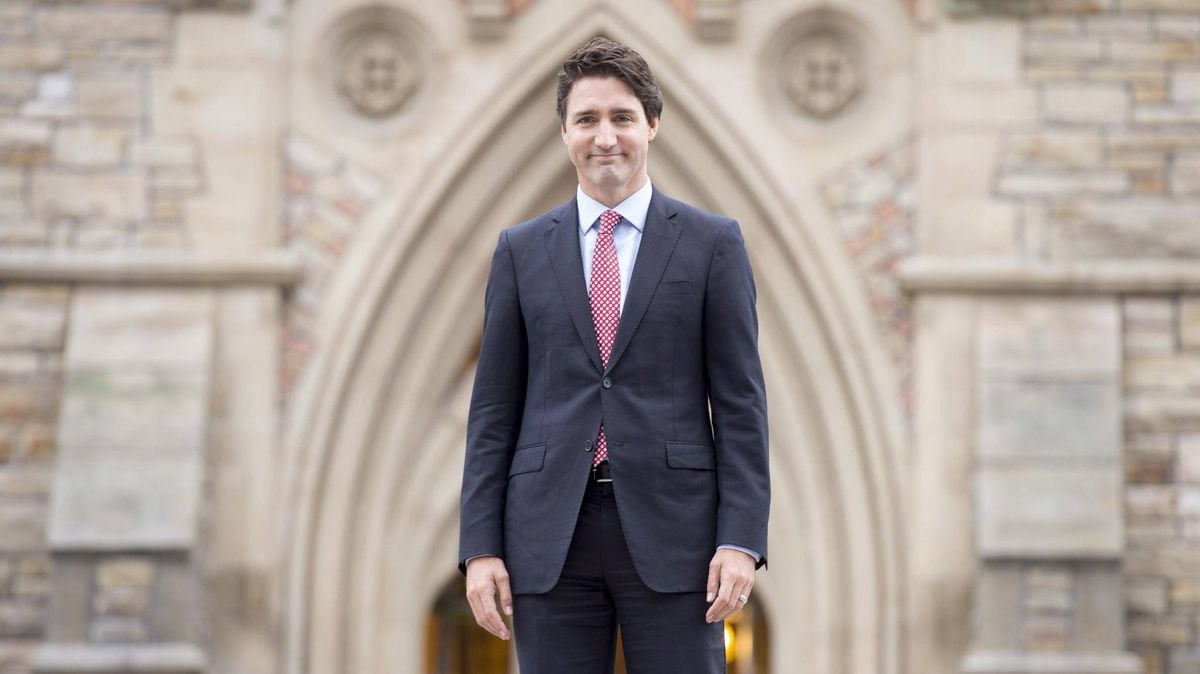Canada's Next Prime Minister: Top Economic Challenges

Table of Contents
Addressing Inflation and the Cost of Living Crisis
Canadians are grappling with a significant cost of living crisis, largely driven by soaring inflation. The next Prime Minister must prioritize strategies to alleviate this pressure on households.
Soaring Inflation Rates
Current inflation rates in Canada are impacting Canadians across the board. The rising cost of essential goods and services is eroding purchasing power, particularly for vulnerable populations.
- Increased grocery prices: Food inflation has surged, making it difficult for families to afford nutritious meals.
- Housing costs: Rent and home prices continue to climb, making housing unaffordable for many.
- Energy prices: Fluctuating energy prices, especially for gasoline and heating, add to the financial strain on households.
- Impact on low-income families: Low-income families are disproportionately affected, facing difficult choices between essential needs.
Potential solutions include targeted subsidies for low-income households, careful adjustments to interest rates by the Bank of Canada to curb inflation without triggering a recession, and investments in improving supply chains to reduce bottlenecks and increase efficiency. Addressing the root causes of inflation, rather than just treating the symptoms, will be crucial.
Wages vs. Inflation: A Growing Gap
The wage-inflation gap represents a critical challenge. While inflation is rising sharply, wage growth has not kept pace, leading to a decline in real wages for many Canadians.
- Stagnant wages: Many workers haven't seen significant wage increases, leaving them struggling to keep up with rising costs.
- Decreased purchasing power: The erosion of purchasing power reduces consumer spending, potentially impacting economic growth.
- Impact on consumer spending: Reduced consumer spending can lead to slower economic growth and potentially even a recession.
Addressing this requires a multifaceted approach. Policies promoting stronger collective bargaining, increases in the minimum wage, and investments in job creation within higher-paying sectors are all crucial. Furthermore, exploring innovative approaches to improve worker productivity and skills development can contribute to higher wages in the long term.
Navigating Global Economic Uncertainty
Canada's economy is intertwined with the global economy, making it vulnerable to international shocks. The next Prime Minister must develop strategies to navigate global economic uncertainty effectively.
Global Recession Risks
The risk of a global recession looms large, potentially impacting Canada's economic performance significantly. Geopolitical instability further exacerbates this risk.
- Impact on exports: A global recession would likely reduce demand for Canadian exports, impacting key sectors like natural resources and manufacturing.
- Impact on investment: Uncertainty can deter foreign and domestic investment, hindering economic growth.
- Impact on job creation: Reduced investment and export demand can lead to job losses across various sectors.
- Geopolitical instability: Conflicts and global tensions introduce significant uncertainty and can disrupt supply chains and trade relationships.
Mitigation strategies include diversifying trade partners to reduce reliance on single markets, investing in domestic industries to enhance resilience, and strengthening social safety nets to support workers and families during economic downturns. Proactive diplomacy to reduce geopolitical tensions will also play a vital role.
Supply Chain Disruptions
Ongoing supply chain disruptions continue to impact Canadian businesses, leading to increased costs and delays.
- Increased costs: Businesses face higher costs for raw materials and transportation, squeezing profit margins.
- Delays: Delays in production and delivery impact businesses' ability to meet demand.
- Impact on manufacturing and retail sectors: Both the manufacturing and retail sectors have been significantly impacted by these disruptions.
Solutions involve investing in domestic manufacturing capacity to reduce reliance on foreign suppliers, diversifying supply sources to mitigate risks associated with single-source dependencies, and improving infrastructure, particularly transportation networks, to facilitate smoother and more efficient movement of goods.
Managing the National Debt and Deficit
Canada's national debt and deficit represent long-term economic challenges that require careful management.
Growing National Debt
Canada's national debt is substantial and continues to grow, raising concerns about its long-term implications.
- Interest payments: A large debt necessitates significant interest payments, reducing funds available for other government programs.
- Impact on future government spending: High debt servicing costs constrain future government spending on essential services.
- Credit rating implications: High levels of debt can negatively impact Canada's credit rating, increasing borrowing costs.
Strategies for debt reduction include a combination of spending cuts, targeted tax increases, and policies promoting strong economic growth to increase tax revenues. Careful prioritization of government spending is essential.
Fiscal Sustainability
Ensuring long-term fiscal sustainability is crucial, given Canada's aging population and rising healthcare costs.
- Aging population: An aging population increases demand for healthcare and social security benefits.
- Healthcare costs: Healthcare costs are rising rapidly, placing a significant strain on government budgets.
- Infrastructure needs: Significant investment is needed to upgrade and maintain Canada's aging infrastructure.
Improving fiscal sustainability requires a long-term strategy encompassing healthcare reform to improve efficiency and affordability, strategic investments in infrastructure to boost productivity and economic growth, and exploring options for increasing tax revenue through a more progressive tax system.
Investing in Canada's Future: Innovation and Growth
Investing in innovation and addressing climate change are crucial for Canada's long-term economic prosperity.
Investing in Innovation
Investing in research and development (R&D) is essential for driving economic growth and creating high-paying jobs.
- Funding for science and technology: Increased funding for scientific research and technological innovation is crucial.
- Attracting foreign investment: Canada needs to attract foreign investment in innovative sectors.
- Supporting start-ups: Providing support for start-ups and small businesses is vital for fostering innovation.
Policies to foster innovation include tax credits for R&D, streamlined regulatory processes to reduce barriers to entry for new businesses, and strengthening partnerships between universities, research institutions, and the private sector.
Addressing Climate Change
Transitioning to a low-carbon economy presents both challenges and opportunities.
- Investing in renewable energy: Investing in renewable energy sources creates new jobs and reduces reliance on fossil fuels.
- Creating green jobs: A shift towards a green economy creates numerous job opportunities in sectors like renewable energy and sustainable technologies.
- Adapting to climate change impacts: Investing in infrastructure and adaptation measures is essential to mitigate the negative impacts of climate change.
Policies supporting this transition include implementing effective carbon pricing mechanisms, investing heavily in green technologies, and providing job retraining programs to help workers adapt to the changing economy.
Conclusion
The next Prime Minister of Canada will face significant economic challenges. From tackling inflation and managing the national debt to navigating global uncertainty and investing in future growth, the decisions made will have profound consequences for all Canadians. Understanding these complex issues, as outlined in this analysis of Canada's Next Prime Minister's Economic Challenges, is crucial for informed participation in the upcoming election and for shaping a prosperous future for our nation. Let's engage in a thoughtful discussion about the best strategies to address Canada's Next Prime Minister's Economic Challenges and build a strong and resilient economy for all.

Featured Posts
-
 10 Must Watch Romance Dramas Featuring Incredible Plot Twists
Apr 30, 2025
10 Must Watch Romance Dramas Featuring Incredible Plot Twists
Apr 30, 2025 -
 Lich Thi Dau Chinh Thuc Giai Bong Da Thanh Nien Sinh Vien Quoc Te 2025
Apr 30, 2025
Lich Thi Dau Chinh Thuc Giai Bong Da Thanh Nien Sinh Vien Quoc Te 2025
Apr 30, 2025 -
 Za Vtorata Gripna Vlna Ofitsialno Stanovische Ot Prof Iva Khristova
Apr 30, 2025
Za Vtorata Gripna Vlna Ofitsialno Stanovische Ot Prof Iva Khristova
Apr 30, 2025 -
 Watch Ru Pauls Drag Race Live 1000th Show Global Livestream From Vegas
Apr 30, 2025
Watch Ru Pauls Drag Race Live 1000th Show Global Livestream From Vegas
Apr 30, 2025 -
 Data Breach Millions Lost After Office365 Executive Inboxes Compromised
Apr 30, 2025
Data Breach Millions Lost After Office365 Executive Inboxes Compromised
Apr 30, 2025
